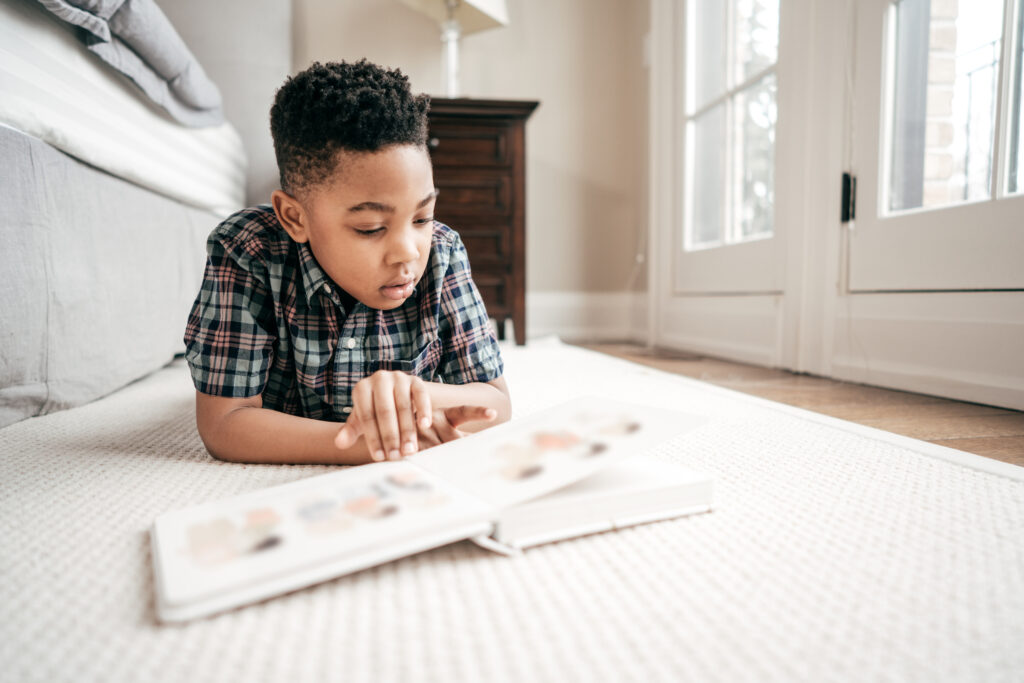The number of people reading for pleasure is on the decline.
According to the American Time Use Survey, between 2004-2017, the number of Americans aged 15 and older who read for pleasure dropped from 28 to 19 percent. The study also shows that time spent reading has also declined, with Americans spending only 16 minutes a day reading for pleasure in 2019, down from 23 minutes in 2004.
It’s no surprise that children spend less time reading for pleasure today. Instant entertainment and stimulation take precedence over slower, contemplative reading.
According to Common Sense Media. . .
- HALF of all children under eight own a tablet device and spend an average of about 2.25 hours a day on digital screens
- 8- to 12-year-olds spend an average of almost five hours a day looking at screens on smartphones, tablets, gaming consoles, and TVs
- Teens aged 3 to 17 spend about 7 hours and 22 minutes per day on screen time.
Read more about children and screen time.
While reading scores are on the rise, pleasure reading has been declining steadily. Leisure reading also declines more as students age. source
Why Reading for Pleasure Matters
- Positive Benefits on Mental Health. How often students read can relate to their mental health. For instance, a Scholastic Reading Frequency report shows teens who were infrequent readers were more likely to say they felt:
- nervous or anxious (50% of infrequent readers vs. 39% of frequent readers)
- sad or depressed (37% of infrequent readers vs. 25% of frequent readers)
- lonely (30% of infrequent readers vs. 19% of frequent readers).
- Reading Builds Social Skills and Empathy. Reading allows students to experience the world from other perspectives and gain insights into other cultures and experiences. Furthermore, reading can help students build greater emotional intelligence.
- Boost Academics. Reading for pleasure is linked to increased cognitive development, including clearer thinking, better problem-solving, and improved decision-making. It also builds vocabulary and strengthens writing skills.
How to Make Reading for Pleasure Fun
One factor that can erode a love of reading is when childre are made to read books that have no interest in. While all students will encounter required reading in school, it shouldn’t impact a desire to read outside of school. These tips can help build a reading culture at home and help students tap back into their love of reading for reading’s sake.
- Let students choose their own books. Having access to a wide variety of styles and themes is important.
- Allocate reading time every day
- Give books as gifts
- Join or create a reading challenge with prizes
- Talk about books together after you read them.
- Read books aloud together
- Subscribe to magazines
- Read about popular books online and reserve them from the library
- Swap books with friends
Kids Who Read Have Parents Who Read.
One of the most important factors in building a reading-positive culture for kids is having a role model who reads for pleasure. For instance, 57% of children who read often have parents who encourage daily reading; however, only 16% of children who are infrequent readers have parents who encourage reading. Source.
Get Reading Help at GradePower Learning
Reading is the foundation of all learning. So, it makes sense that when kids struggle to read, reading is anything but pleasurable. Help your child build stronger reading skills with a reading program at GradePower Learning. Our reading programs help students of all ages build a strong foundation of reading skills to launch them into a world of reading for life.
Contact a location near you to get started.





